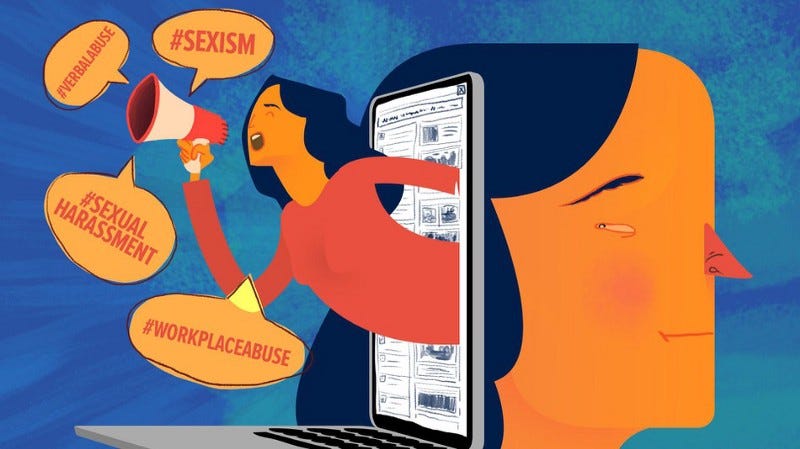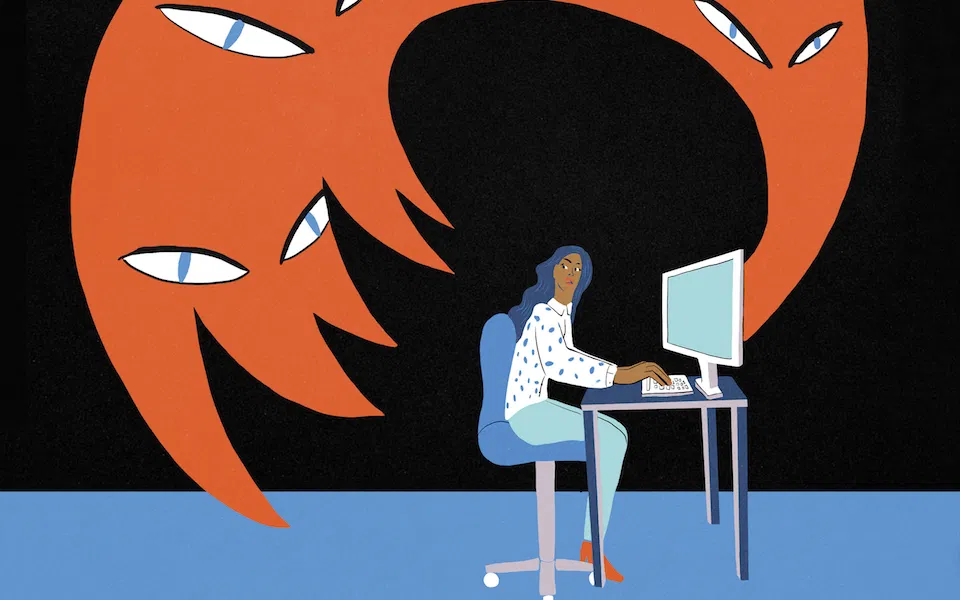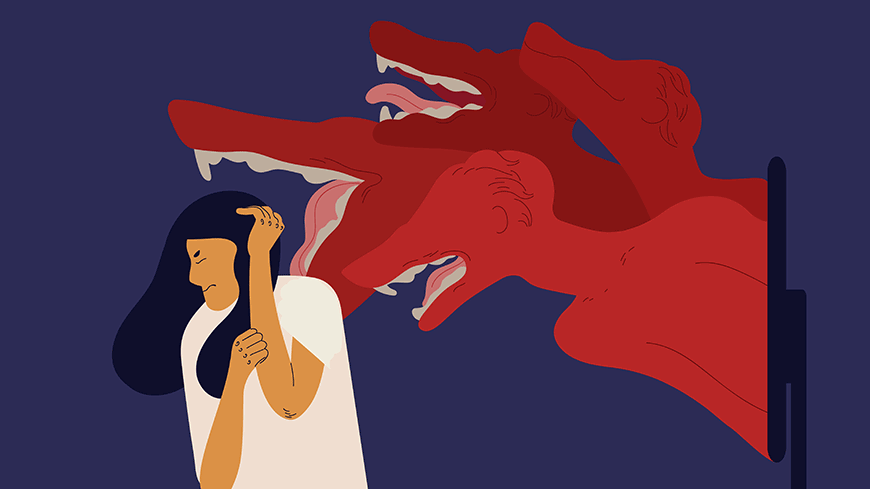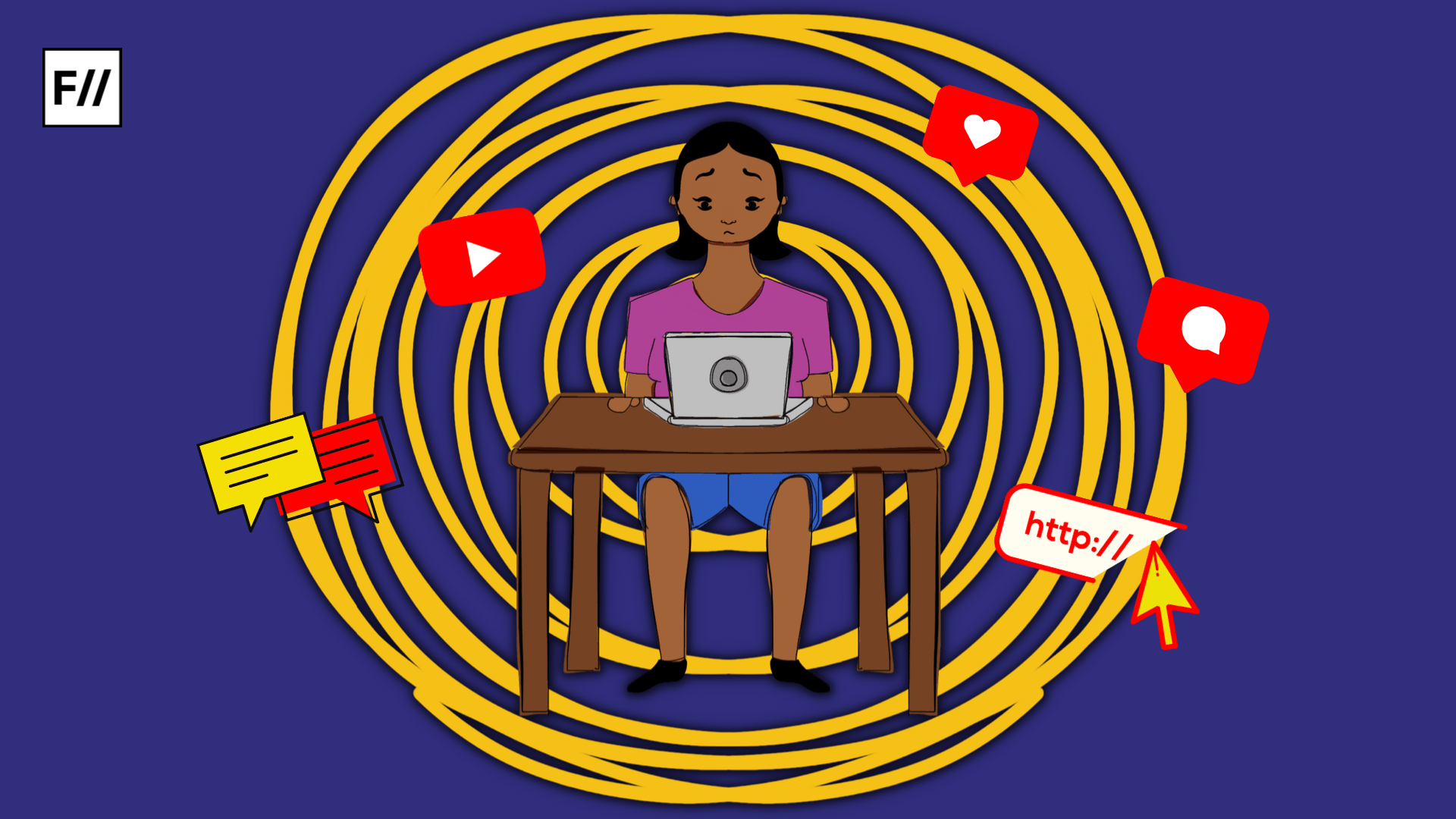Social Media has given new dimensions to the ways and means people communicate. Everyone is free to put up their creativity and share text, images, audio and video. It seems like every individual now can truly avail their freedom of speech and expression. Nevertheless, a closer inspection of these social media posts indicate that there are again, inequalities and offensiveness galore, one person’s freedom often demeaning another’s dignity.
There are gross instances of people insulting and degrading others behind the veil of virtual reality. Women and people from marginalised social locations end up being the primary victims of online hate and abuse, owing to the deeply rooted misogyny and discrimination in the society.
The new techniques of targeting women online by perpetrators leads to them being victims of cyber crimes like hacking, surveillance, harassment, death threats and malicious distribution. Women celebrities, noted women leaders, journalists and activists who have been outspoken in their call for gender equality immediately become prone to cyberstalking, harassment, online bullying and trolling.
The United Nations has stressed on the importance of recognising cyber violence against women as an activity which is as disturbing as physical violence. Citing the 2013 report of the World Health Organisation that compares violence against women as problem of ‘epidemic proportion,’ journalists Catherine Buni and Soraya Chemaly called social media the ‘petri dish’ of the epidemic.

The Restricted women discourse expresses the barriers faced by women due to their gender. Their social roles and expectations hinder their journey towards equal rights. The primary expectation from a woman articulated by her gender is the role of the “caretaker” which eventually leads to the glorification of the housewife, making women struggle to attain the “perfect mother” status. There is an expectation of a woman to fit into the image of the Holy mother
Both Buni and Chemaly have themselves faced cyber threats when they reported on violence against women. Under the guise of free speech, misogynist groups circulating objectionable content and images continue to thrive on social media. Any person who questions, is again subjected to cyber violence.
Online hate messages often aim at silencing the one who raises questions, especially with respect to women’s rights. It is used as a technique to reinforce the patriarchal values that dominate a gendered worldview. Researchers Jenny Sunden and Sussanna Paasonen write, “Online hate can be understood as a disruptive force aiming to modulate and control the capacities of bodies to act and move, to affect and to be affected by one another.” These acts of shaming, objectification and hate messages are strategies to create fear in the minds of women.
Analysing the online discourse using a feminist lens
Investigating the pattern of online abuse faced by women, Anna Blixt (2018) in her work on “Discourse Analysis on Swedish Feminism” uses two broad concepts to analyse social media discourse that created momentum among internet users, namely Problematic Men and Restricted Women.
The Problematic men perspective relates to discourse on violence inflicted by men and how they violate rights of women. Men’s latitude refers to the idea that when a man is involved in a crime or any activity for that matter, he can easily get away with it due to his gendered power position. This also influences structural violence, causing vulnerability to women’s existence.
The Restricted women discourse expresses the barriers faced by women due to their gender. Their social roles and expectations hinder their journey towards equal rights. The primary expectation from a woman articulated by her gender is the role of the “caretaker” which eventually leads to the glorification of the housewife, making women struggle to attain the “perfect mother” status. There is an expectation of a woman to fit into the image of the Holy mother.
Negative latitude is the disadvantage women face in social media, the outcome of the thought that “women should be better”. This limits women in every way and makes it an arduous task for them to voice out for their rights.
Also read: Viral Culture: The Toxic, Invasive Trend Of Online Trolling

The manifestations of these ideas can be observed in the conversations surrounding the #Metoo movement. #Metoo brought into focus the sexual harassment faced by women in different professions across the world. There was a surge in the number of abusive messages with patriarchal rhetorics which were circulated online, suppressing the voices of the survivors.
In India too, memes and trolls gathered momentum after various celebrity survivors called out their predators. The users backed perpetrators in most of the cases. The female survivor’s character was often called into question. Whereas, the talent and industriousness of the male perpetrator put his character beyond question.
The very few posts that criticised the perpetrators also amplified the Holy Mother discourse where women are holy if they are family and behave in socially accepted ways, not otherwise. Victim shaming and victim blaming comments were widely found in social media posts. The The discourse reiterated women’s negative latitude, warning survivors to be more careful and vigilant. In such situations, the good feminist narrative also sets in, whereby feminists and feminist organisations are pressurised to speak up and are shunned if they do not react in ways that are expected and validated by the society
Trolls and memes question every #Metoo survivor’s veracity, long silence and agenda. Men often tend to intimidate women who voice harassment experiences on social media. They take offense at allegations against one of “theirs.” This discourse in defense of powerful men also reflects the men’s latitude. Men can often get away with any kind of behaviour, just because they are men. The sexual harassment survivors who speak out, become victims of online abuse and cyberbullying. They are attacked based on their color, caste, ethnicity, socio-economic status and religion.
While the memes which target the victims of the #Metoo movement magnify the men’s latitude, they also reinforce the women’s negative latitude. Women are expected to follow higher social and ethical standards. Deviations from these standards are criticised. Everything said and done by the survivor is scrutinised, beginning from the attire she wears to her delay in exposing the perpetrator. The women are expected to give satisfactory answers to critical questions.

The 2019 Pollachi sexual abuse case and cyber responses to it can be recalled here to elaborate on this discourse pans out. The Soutth Indian state of Tamil Nadu was shocked by a series of sexual abuse cases in a town called Pollachi. Young women of college going age were sexually exploited and memes were widely circulated among internet users based on this incident.
This came into the limelight after a news organisation uploaded the video of a group of men harassing and abusing a girl on their social media handle. Social media discussions on this failed to offer support to the survivors, and the “Men will be men” narrative was emphasised in every discourse, holding the women themselves accountable for the crime.
Memes built on survivors’ morality were shared adding ‘humor’ to the incidents. Posts directly warning men to confirm chastity before marrying any women from that particular region were circulated. Cyber abuse followed sexual abuse. The memes did not question the men’s actions. The discourse allowed sexual violence and cyber harassment to be natural of men, echoing men’s latitude.
Also read: Clubhouse: Popular Audio App Facilitates Agency But Fails To Create Safe Spaces
The very few posts that criticised the perpetrators also amplified the Holy Mother discourse where women are holy if they are family and behave in socially accepted ways, not otherwise. Victim shaming and victim blaming comments were widely found in social media posts. The The discourse reiterated women’s negative latitude, warning survivors to be more careful and vigilant. In such situations, the good feminist narrative also sets in, whereby feminists and feminist organisations are pressurised to speak up and are shunned if they do not react in ways that are expected and validated by the society.

Social media trolls and abuse have become weapons to silence survivors of sexual abuse and women with critical opinions. This is a serious concern in the new age digital era that facilitates crimes under the veil of anonymity. Online news portals also create content based on such trolls for clickbait and disseminate the content to a larger audience. The headlines meant to grab attention, often compromise the dignity of women. It influences and shapes the way the readers perceive the female population.
The most prevalent form of cyber bullying and cyber abuse in memes, trolls and social media posts against survivors of sexual violence in India question their morality. “Character” becomes a gendered trait.
The media’s role in shaping opinion can bring a change in the way people perceive gender in cyber spaces. Sensitising people on gender based crimes and breaking the stereotypes in the representation of women in media is essential. With collective action, we must strive to make the internet a safe place for women and channelise it towards women empowerment.
Lavanya is a communication media professional and passionate writer/storyteller. She is in the journey of learning, unlearning and relearning every aspect of equality, and a proud, strong advocate of social justice in everyday life who is interested in dialogues and discussions around society and empowerment for all.
Annie is a researcher who loves to discover the stories behind people, places, events and things. She reads, studies and analyses in an effort to look at the society through an inclusive lens
Featured Illustration: Ritika Banerjee for Feminism In India




